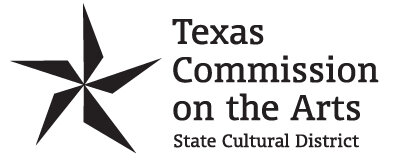Brown Foundation Gallery
August 9 - November 2, 2025
ArtWalk Opening Reception
Saturday, August 9, 2025
6 – 9 PM
Artist talk at 6:30 PM
GAC’s exhibitions are supported in part by a grant from Texas Commission on the Arts.
Daniel Kraus
Monoliths Among Palmettos: The Failed Florida Barge Canal
“…this canal is a bad decision but I have committed myself to it and must go ahead.” -Senator Claude Pepper
The Florida Barge Canal, an attempt to connect the Atlantic Ocean to the Gulf of Mexico, is one of the largest and most expensive failed public works projects in United States history. Over 80 years after construction began and with 30 percent of the project completed, this complex system of defunct canals, dams, locks, reservoirs have become concrete monolith structures in the Florida wilderness. However, the derelict barge canal sites have developed their own eco-systems, and conservationists and environmentalists are at odds over which environment deserves to stay and which should be erased. The photographs in this project document these derelict sites scattered across Florida, but more broadly, visualize the domino effect of misguided policy.
Since the earliest Spanish explorers hacked trails through palmetto brush, various colonial administrators and imperial governors dreamt of safe passage between the Atlantic Ocean and the Gulf of Mexico. In 1935, progressive politics and New Deal era–funding initiated the long-awaited Trans-Florida Canal. Although railway lines ran throughout Florida, a canal would add to the existing infrastructure and modernize the dense and swampy landscape in an effort to bring industry to the burgeoning towns in central Florida. The canal route determined by the Army Corps of Engineers required thousands of acres of land be cleared and flooded. This massive work effort displaced entire towns, most notably the freedman’s town of Santos. The townspeople, black share-croppers descended from emancipated slaves, were coaxed into selling their land to the state for pennies on the dollar along with jobs helping to clear the land.
Throughout the canal’s history, both promoters and dissenters used the ideas of progress, sustainability, and local interests to champion their cause. After only a year of rapid construction, one-third of the canal route was completed. Afterwards came years of protests, underfunding, and congressional acts which brought the canal to an ambiguous slowdown. In 1971, President Richard Nixon cancelled the project, which marked the success of environmentalists who alerted Floridians to the threat of salinization to the state’s aquifer, the backbone of its economy.
Environmental issues and sustainability efforts are often characterized by two opposing arguments: building or not building, preserving or destroying. Attempts to demolish the sites to bring pre-canal landscapes back have people facing tough questions. Which landscape is original, more important, and what’s the right thing to do? The photographs in this project explore what happens when political agendas sideline communities, leaving social and environmental questions unanswered almost a century later.
Daniel Seth Kraus‘s work blends historical research with photography to deepen our understanding of people, places, and how they combine to create a culture. In practice, Kraus strives to create work which is historically informed and sympathetic towards the subjects and viewers. Having a background and training in historical research has greatly influenced the way he approaches creative projects. He also publishes photo book reviews on his YouTube channel, The Photobook Review. Kraus earned a MFA (2017) in photography at the Tyler School of Art & Architecture at Temple University and also holds a BFA in Photography and BA in History from the University of North Florida (2013). His work has been featured in numerous print and online publications, including Esquire Russia, Fraction, SeeSaw, Oxford American, Create Magazine, Aint-Bad, and Ruminate Magazine. His photographs have been exhibited in national and international juried exhibitions including South Korea, China, and Ireland. Kraus was the 2016 recipient of the College Arts Association’s Professional Development Fellowship in Visual Arts grant and was awarded a fellowship by the John Teti Rare Photography Book Collection at the Institute of Art & Design at New England College for his self-published books and research on the practice of "participant observation" in documentary photography. He has written on photography and photo books for Pellicola Magazine. Kraus currently lives in Houston, TX where he is Assistant Professor of Art & Design at the University of Houston-Clear Lake teaching photography and the history of photography. Before moving to Houston, he taught photography, video, and the history of photography at Tyler School of Art & Architecture at Temple University, Pennsylvania College of Art & Design, University of the Arts and The College of New Jersey.
danielsethkraus.com



